Are you looking to upgrade your clinic’s sterilization equipment? Tuttnauer autoclaves have a well-earned reputation for effectiveness, efficiency, and reliability. Their extensive selection of options means there is a Tuttnauer device to suit the needs of any dental office. In this Tuttnauer autoclave comparison guide, we’ll help you choose the best sterilizer for your dental practice.
Why the Right Autoclave Isn’t a One-Size-Fits-All Call
Cleaning dental tools is not just about following rules; it is also about keeping patients and staff safe. Autoclaves are the most reliable, efficient sterilization devices. They use steam and pressure to clean tools. This removes the need for expensive chemicals or slow manual cleaning methods.
Not all autoclaves are built equal — and not all practices need the same thing.
There are many types of autoclaves. This allows dental practices to select the equipment that best suits their needs. While cost is important, picking the cheapest model isn’t always the best choice when choosing an autoclave. Some devices have long disinfection cycles or require frequent maintenance, which can slow down workflow.
In this guide, you will find a clear overview of fthe ive top Tuttnauer autoclaves. This will help you choose the best one for your dental practice.
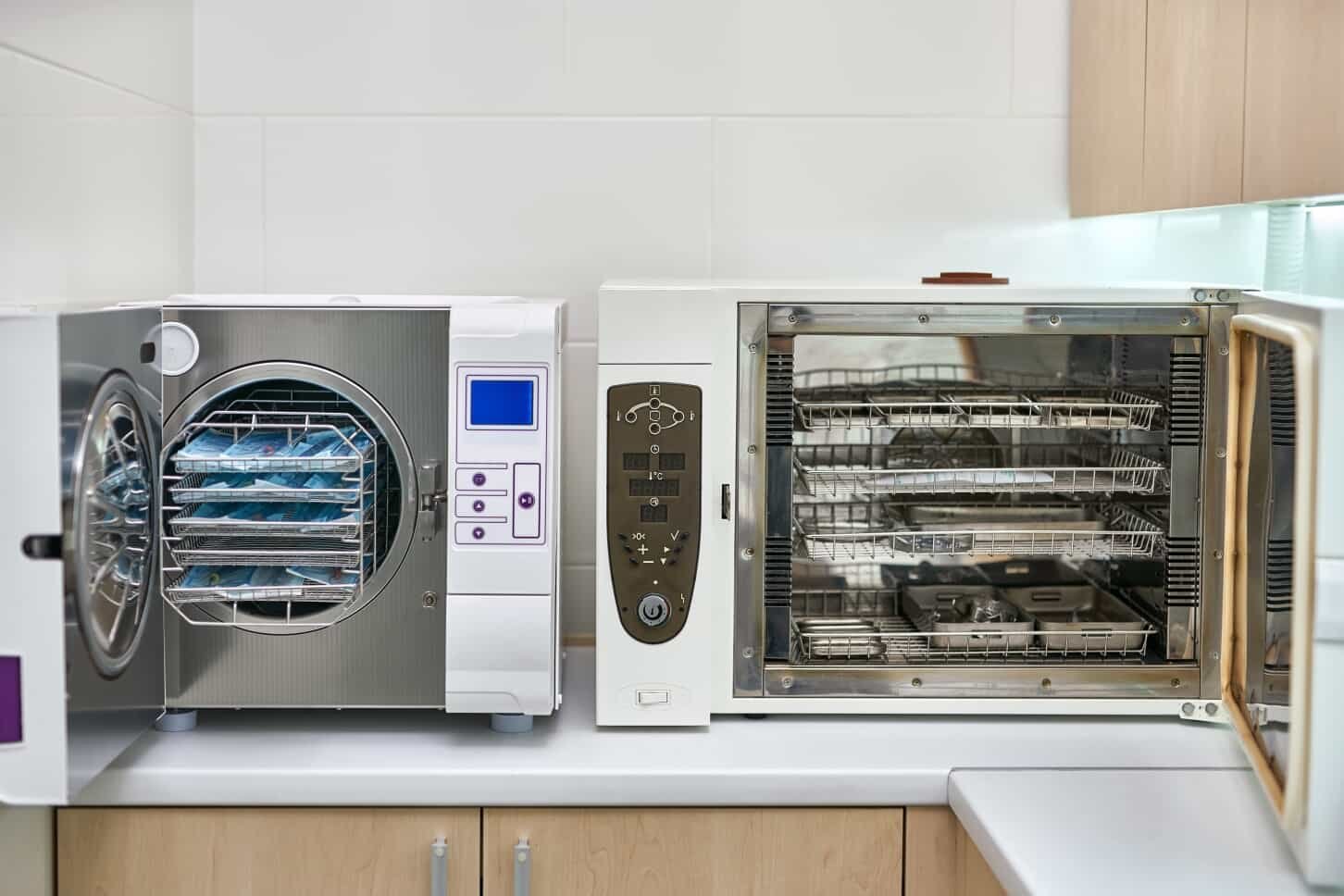
Why Tuttnauer Autoclave Selection Matters for Every Dental Practice
Every Tuttnauer sterilizer for dentists is built for long-term reliability and compliance. To choose the best Tuttnauer autoclave for you, start by understanding the different classes available. In addition to size and cycle time, you should consider the specific sterilization method each class provides.
- Class B: Class B autoclaves use vacuum and steam sterilization. The autoclave has a vacuum pump that removes air from the chamber, beginning the sterilization process.
Removing air from the chamber helps the steam reach any porous or hollow instruments. This fully sterilizes them.
This two-step process makes Class B autoclaves good for many materials. This includes wrapped instruments and hollow instruments. They’re versatile enough to be helpful for the full range of equipment used in most dental practices.
- Class N: Class N autoclaves also remove air from the chamber before sterilization, but they do so using gravity displacement. The air is pushed out by the steam that fills the chamber.
Class N autoclaves are not as versatile as Class B autoclaves. They are not good for porous loads or hollow items. However, they work well for sterilizing unwrapped solid instruments.
- Class S: Class S autoclaves use both vacuum and gravity methods. These methods are also found in Class B and Class N autoclaves. There is no one-size-fits-all setup for Class S autoclaves.
It is essential to read the manufacturer’s instructions. This will help you understand how to use Class S devices and their limits. They are useful due to their flexibility, but ensure that the Class S device you choose is suitable for your practice’s needs.
Tuttnauer offers autoclaves that employ all three displacement methods. Some models offer multiple options, allowing you to easily find an autoclave that meets your specific needs in terms of both size and sterilization methods.
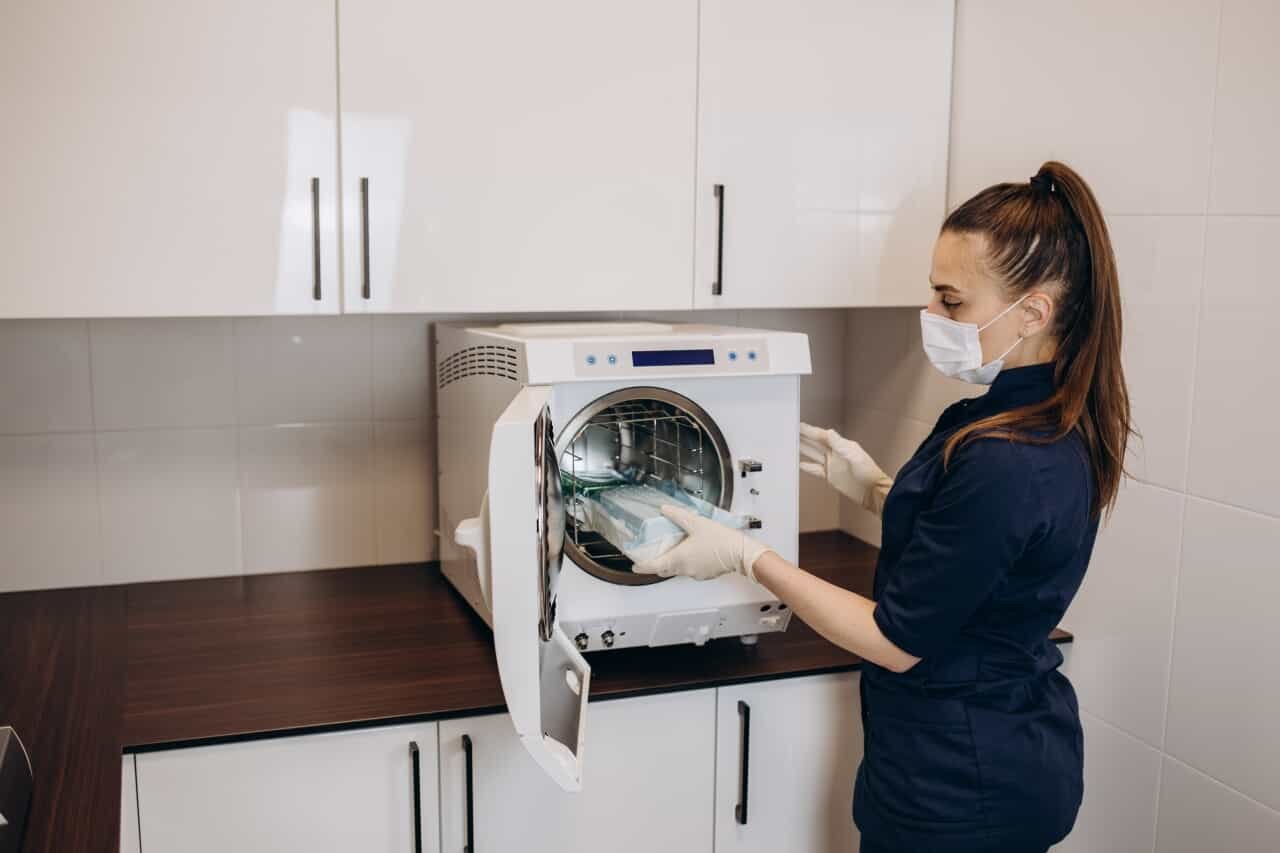
How to use the Tuttnauer Autoclave
Tuttnauer autoclaves all follow a similar cycle, with the main difference being the air displacement method. Once you place the instruments into the autoclave and turn it on, the device cycles through three phases:
- Evacuation: Air is removed from the chamber. This process creates a vacuum to allow optimal steam penetration.
- Exposure: High-pressure, high-temperature steam fills the chamber. The heat effectively kills any microorganisms on the instruments.
- Drying: The steam is evacuated from the chamber to remove moisture. This prevents rust from developing on instruments.
Wrapped instruments remain sterile until they are removed from packaging.
Autoclaves require regular maintenance to ensure they operate properly. Office staff should wipe down the chamber walls and the door after each use. Use disinfectant wipes to remove any debris or other contaminants, ensuring the autoclave is ready for its next use.
You should perform a more comprehensive cleaning of your autoclave at least once a week. Tuttnauer provides detailed instructions for cleaning each model, including how to clean the chamber, doors, gaskets, drain, and filters. Thorough cleaning prevents grime or debris from building up. This helps prevent the growth of microorganisms and maintains effective sterilization.
You may also need to descale regularly to remove mineral build-up. You should also replace filters and other parts.
You should clean and maintain the autoclave. Also, ensure that all instruments are correctly prepared before sterilization. Use an automatic cleaning method, such as an ultrasonic cleaner, to remove blood, saliva, and other debris from the tools.
Ensure instruments have dried thoroughly after cleaning. Once you are ready for sterilization, follow the instructions for your device and the instruments you will sterilize.
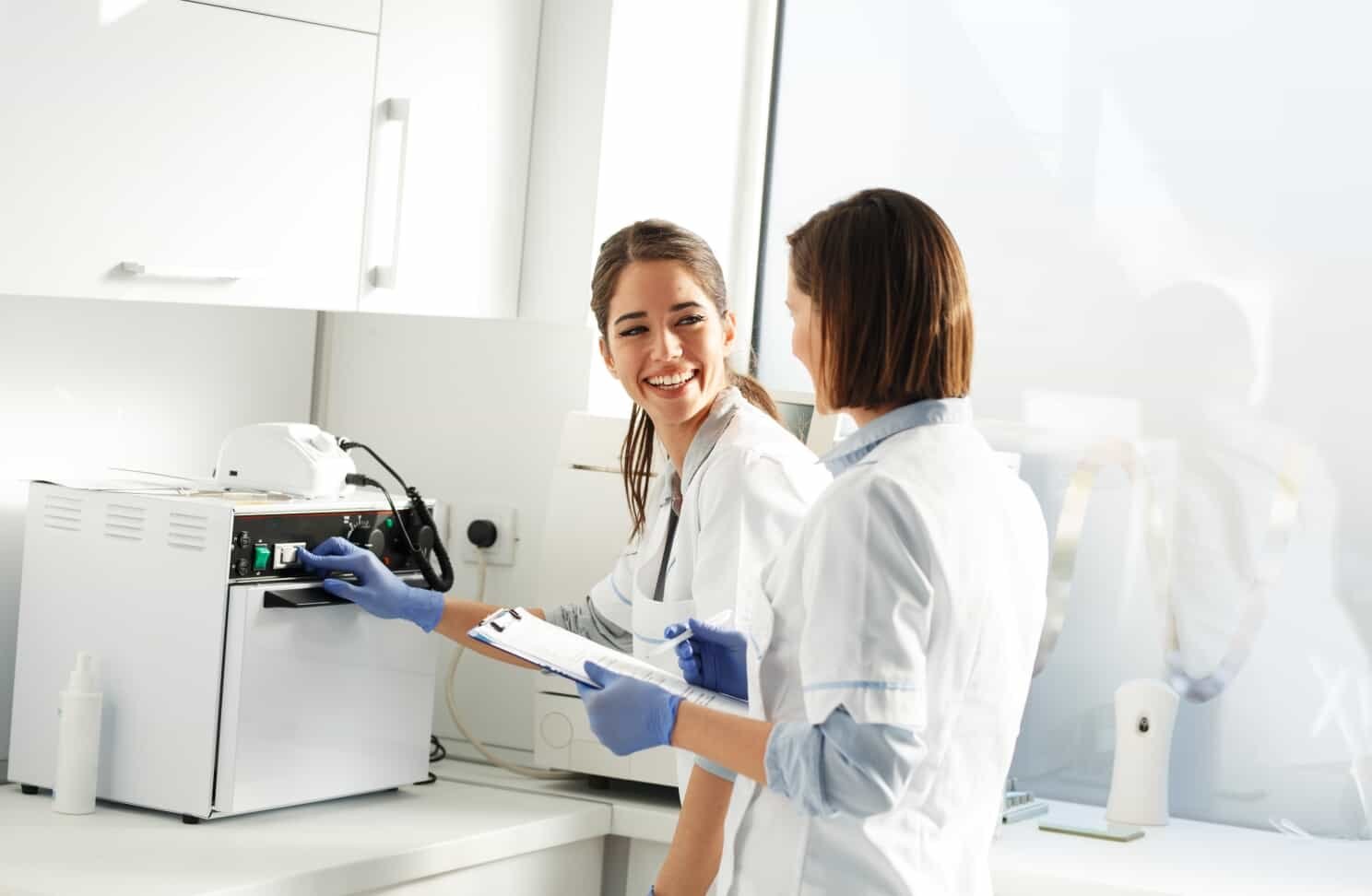
What Should You Look For When Choosing an Autoclave?
Cycle Time & Throughput: In a busy practice, staff members can process multiple sets of instruments per day. You will need an autoclave that can keep up with typical patient volume. Consider how many trays the autoclave can accommodate during a single cycle. How fast is each cycle, and how many can you run in a day?
Chamber Size: It’s essential to select an autoclave that is the correct size for the equipment you use. Check the device’s specifications. Make sure it can sterilize any cassettes, handpieces, or surgical kits you use in your practice.
Ease of Use: Setting up an autoclave shouldn’t require staff to be away from patient care. Choose a device that offers the right level of operational efficiency that you need. Consider whether it features manual or automated loading, digital displays, and alerts that indicate when the cycle is complete.
Automation & Drying: In addition to ease of use, consider the level of automation you need in an autoclave. Does your practice need closed-door drying capabilities? Some models offer different degrees of programmable cycles. You should look for a model that provides the level of automation you need, without adding features that you’ll never use.
Maintenance: Maintaining your dental equipment is a critical part of protecting your investment. Keeping the device up and running ensures that you never find yourself without a way to sterilize equipment.
Consider the life of replaceable parts, such as gaskets. Additionally, consider the cleaning requirements for the reservoir and other components. Autoclaves with built-in diagnostics can help you troubleshoot issues. Gasket life, reservoir cleaning, and built-in diagnostics
Budget vs. ROI: Buying equipment can be expensive initially. However, you might save money on maintenance later. Devices that don’t need as much service save your practice money in the years after the purchase.
Additionally, reliable equipment ensures that you won’t encounter unexpected problems. Malfunctioning equipment can result in the cancellation of appointments and high repair costs, negatively impacting practice revenue.
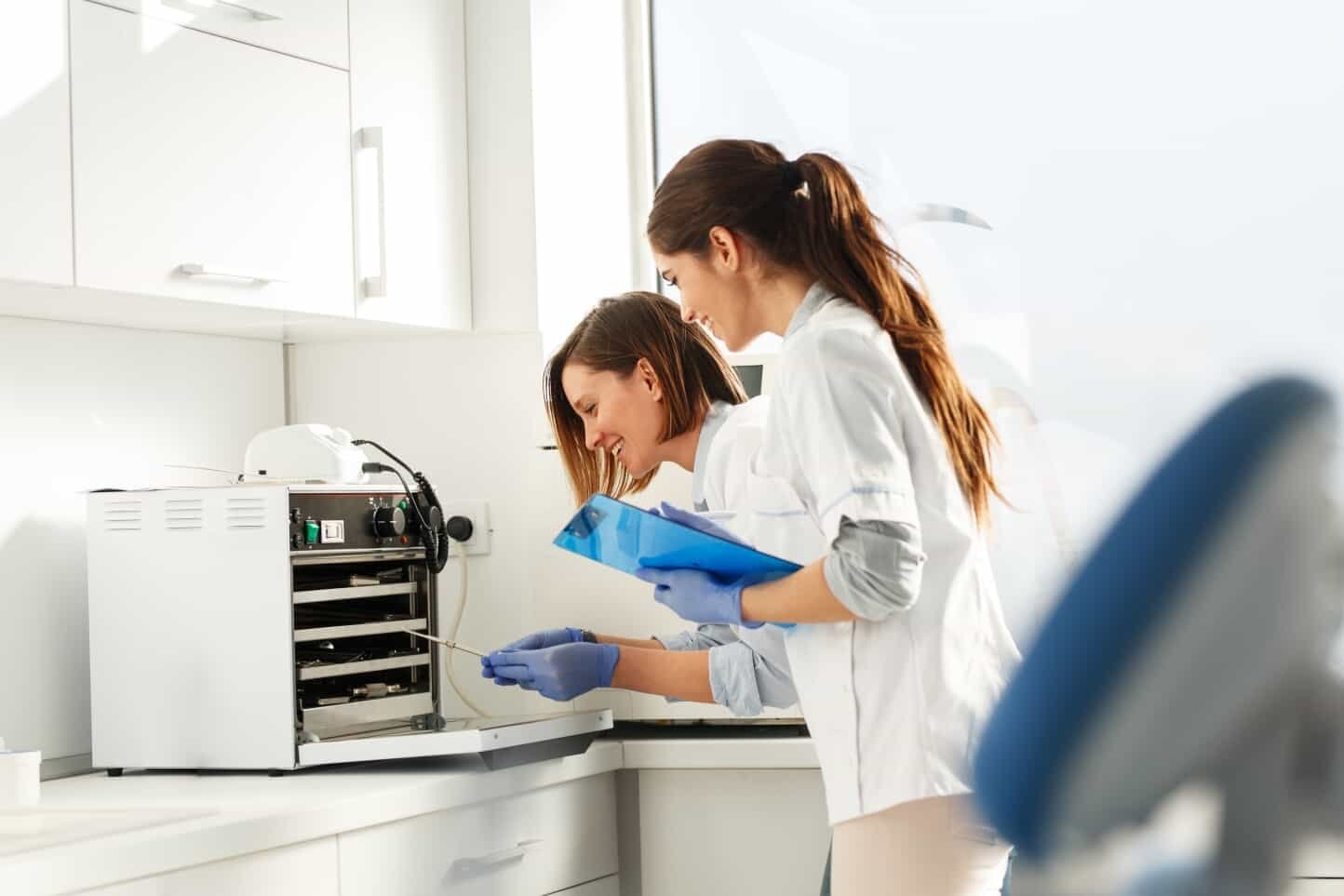
Model Deep-Dives: Pros, Cons & Best Fit for Each Tuttnauer Autoclave
Tuttnauer’s range of autoclaves offers a variety of sizes, cycle speeds, features, and air displacement methods. Each model will provide reliable sterilization. This allows you to focus on which model has the capacity, automation, and versatility your practice needs.
1. Tuttnauer 2540m
Tuttnauer 2540m Autoclave is a semi-automated model that offers effective Class S sterilization. It delivers full functionality with manual settings. The device requires virtually no maintenance aside from routine cleaning. That means incredibly low operating costs for clinics.
The 2540M has a 23-liter capacity and can hold 3 full or 3 half cassettes and 4 trays.
Best For: Small offices that need quick instrument turnaround
Pros & Cons: Fast cycle times, small footprint, multiple safety features. Limited automation features.
2. Tuttnauer 3870ea
The Tuttnauer 3870EA is a fully automatic Class S autoclave system. The 3870EA device has a closed-door active drying system. It also offers three preset sterilization programs and customizable options.
The large 15″ x 30″ chamber can accommodate longer instruments or a higher volume of smaller instruments. It can hold 15 full-size IMS cassettes.
Best For: High-volume practices performing a wide range of procedures.
Pros & Cons: Fast-drying cycle, multiple safety features, and advanced automation. A large footprint may be inconvenient for offices with limited space.
3. Tuttnauer T-Edge 11 Fully Automated Autoclave
Tuttnauer T-Edge 11 refers to the T-Edge line as “Maximum efficiency. Minimum costs.” These compact models are available in both Class S and Class B options, making them suitable for a wide range of practices.
The T-Edge 10 chamber measures 18″ (depth) x 11″ (diameter). and accommodates either three full or three half cassettes. Cycle times start at 20 minutes for unwrapped instruments. The mobile app allows for remote operation and monitoring of cycles.
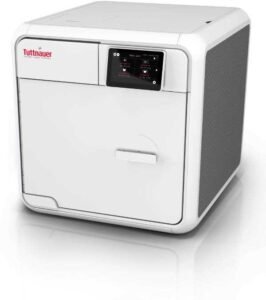
Tuttnauer T-Edge 11 Autoclave Configurations
- #T-EDGE-11S: Class S (Gravity Cycle).
- #T-EDGE-11B: Class B (Pre/Post Vacuum).
Best For: Practices that anticipate near-term growth.
Pros & Cons: The gravity and airflow removal autoclave is upgradeable to pre- and post-vacuum. Small size may be a limitation for high-volume offices.
4. Tuttnauer T-Top
The Tuttnauer T-Top line is a high-performance class B device. It has advanced Wi-Fi connectivity and a color touchscreen for easy use. There are two sizes available, both of which hold up to five trays:
- T-Top 10: 23″x 18.1″x 18″
- T-Top 11: 23″ x 19.5″ x 17.5″
Best For: Ideal for mid-sized clinics that want to maximize productivity
Pros & Cons: Small size preserves valuable counter space, and the mobile app allows remote monitoring. The T-Top offers advanced data reporting that may be unnecessary for some offices.
5. Tuttnauer EZ11 Plus
The EZ11 Plus model has an EZGlide self-locking door. This door opens and closes easily and is comfortable to use. The color display screen is easy to read, even from a distance, allowing staff to monitor cycle status with just a glance.
The EZView display shows the actual temperature and pressure, as well as the current cycle stage. The chamber is 11in x 19.8 and holds up to 5 trays.
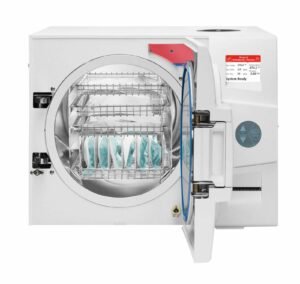
Best For: Busy practices that require large capacity and easy operation.
Pros & Cons: Closed-door drying, simple interface, large chamber. Low cycle customization options, large footprint.
Advantages & Disadvantages: What Tradeoffs Should You Expect?
Several factors must be considered when shopping for an autoclave. The top priority is effective sterilization. Dental professionals must thoroughly disinfect dental tools to ensure patient safety. No room for compromise exists on protecting the health of patients or staff.
Offices can be flexible on other factors, such as:
- Cost: Reliable autoclaves are available at all price points. Sticking to a budget may mean giving up features like Wi-Fi connectivity or touchscreen operation.
- Size: Counter space is valuable, and you must be thoughtful about what size device you select for your practice. A smaller footprint may preserve workspace, but it may also mean running more cycles to keep up with patient volume.
- Cycle Customization: Flexibility in sterilization cycle settings is necessary for practices that regularly use a wide range of instruments. Advanced controls give clinicians better options for effective disinfection, but they often come with a higher price tag.
- Maintenance: Advanced features such as Wi-Fi capability and a digital interface enable greater customization and device performance reporting. However, any device with computerized components comes with more complex maintenance considerations. Review the warranty and service contracts for any device to ensure you have the customer support you need, regardless of the situation.
Final Recommendation — Which Tuttnauer Autoclave Fits You Best?
Depending on your practice size, there is a perfect Tuttnauer autoclave for your needs.
- For small offices: The Tuttnauer 2540m offers affordability and functionality/
- For mid-sized clinics: The Tuttnauer T-Top is flexible, offering remote operation via an app.
- For high-volume operations, the Tuttnauer 3870EA is best suited for a wide range of instrument types and sizes.
- For scalability, the Tuttnauer T-Edge 10 Fully Automated Autoclave allows practices to upgrade from gravity to vacuum evacuation.
Ready to upgrade your sterilization workflow? Contact the team at Universadent to discuss which Tuttnauer Autoclave will best serve your clinic’s needs. At Universadent, we understand the importance of instrument care and infection control protocols in dental practices. We offer a range of autoclave devices to suit dental practices of all sizes and all specialties.
Shop Tuttnauer Autoclaves at Universadent — quality you can trust, backed by expert support and nationwide delivery.
